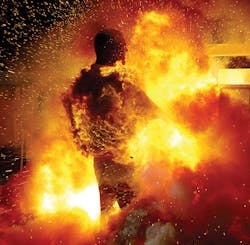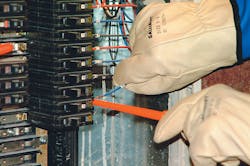Since it was enacted, the Occupational Safety and Health Act of 1970 (OSH Act) has required, in part, that employers provide a workplace free from recognized hazards. The full text of that provision may be found in Section 5, Duties, of the OSH Act — specifically, in Section 5(a)(1). Section 5(a)(2) provides an additional employer responsibility, and Section 5(b) addresses employee compliance:
“(a)(1) Each employer shall furnish to each of his employees employment and a place of employment which are free from recognized hazards that are causing or are likely to cause death or serious physical harm to his employees.
“(a)(2) Each employer shall comply with occupational safety and health standards promulgated under this Act.
“(b) Each employee shall comply with occupational safety and health standards and all rules, regulations, and orders issued pursuant to this Act which are applicable to his own actions and conduct.”
Now that employer and employee responsibilities have been reviewed — and we know who is required to provide a safe and healthful workplace — you may wonder how employers might go about accomplishing this goal.
Understanding the situation
Personal protective equipment (PPE) likely comes to mind as the primary way to provide this safe and healthful workplace. PPE may include respirators, safety glasses, hard hats, hearing protection, personal fall arrest systems (PFAS), arc-rated clothing, and rubber insulating gloves.
PPE is often looked to and used first, but it’s considered the lowest control method in the protection hierarchy and should be used as a last resort after all other measures are exhausted. For a closer look at how to implement an effective control system and limit worker exposure to occupational hazards, see Hierarchy of Controls.
There are numerous recognized hazards that workers in a construction and maintenance environment are potentially exposed to on any given day and in the performance of any given task (Photo 1). Many of these hazards result from the lack of attention to safety by design and leave a worker feeling that he or she has little choice other than to use PPE to perform the task — that is, if PPE is even provided and used at all.
Although PPE is “the last resort,” all too often a hazard assessment is not performed; PPE is not provided; workers are not trained in its limitations, proper care, and use; or workers do not use it or use it properly when it is provided. The following are examples of specific OSHA requirements addressing performance of a hazard assessment and for PPE to be provided and used:
“1910.132(a) Application – Protective equipment, including personal protective equipment for eyes, face, head, and extremities, protective clothing, respiratory devices, and protective shields and barriers, shall be provided, used, and maintained in a sanitary and reliable condition wherever it is necessary by reason of hazards of processes or environment, chemical hazards, radiological hazards, or mechanical irritants encountered in a manner capable of causing injury or impairment in the function of any part of the body through absorption, inhalation or physical contact.”
“1910.132(d) Hazard assessment and equipment selection – (d)(1) The employer shall assess the workplace to determine if hazards are present, or are likely to be present, which necessitate the use of personal protective equipment (PPE). If such hazards are present, or likely to be present, the employer shall:
“(i) Select, and have each affected employee use, the types of PPE that will protect the affected employee from the hazards identified in the hazard assessment;
“(ii) Communicate selection decisions to each affected employee; and,
“(iii) Select PPE that properly fits each affected employee.
“(d)(2) The employer shall verify that the required workplace hazard assessment has been performed through a written certification that identifies the workplace evaluated; the person certifying that the evaluation has been performed; the date(s) of the hazard assessment; and, which identifies the document as a certification of hazard assessment.”
As you can see, these OSHA requirements are very general. They require compliance but do not spell out exactly how to accomplish what is required. The requirements are not specific to any type of hazard in any particular industry. For example, perhaps a PFAS is employed to protect against fall hazards; benching, shoring, or trench boxes to protect against trench collapse; a respirator to protect against inhalation hazards identified on a Safety Data Sheet; or arc-rated garments and rubber insulating gloves to protect against electrical hazards (Photo 2).
There are many potential hazards but, for the sake of the discussion here, consider a number of OSHA’s requirements related to electrical hazards. Few would argue that OSHA provides the “shall,” as OSHA requirements are law. Much like the hierarchy of controls mentioned previously, OSHA has a number of requirements that must be followed when performing energized electrical work. But as we noted earlier, energized work is a “last resort” as covered in this OSHA requirement:
“1910.333(a)(1) De-energized parts – Live parts to which an employee may be exposed shall be de-energized before the employee works on or near them, unless the employer can demonstrate that de-energizing introduces additional or increased hazards or is infeasible due to equipment design or operational limitations. Live parts that operate at less than 50V to ground need not be de-energized if there will be no increased exposure to electrical burns or to explosion due to electric arcs.”
Note that de-energizing is required unless the employer demonstrates why this cannot be accomplished. Unless this is demonstrated by the employer, de-energizing and lockout/tagout are required. If the employer has proven the need for energized work, it must implement other safety-related work practices, such as:
“1910.333(a)(2) Energized Parts – If the exposed live parts are not de-energized (i.e., for reasons of increased or additional hazards or infeasibility), other safety-related work practices shall be used to protect employees who may be exposed to the electrical hazards involved. Such work practices shall protect employees against contact with energized circuit parts directly with any part of their body or indirectly through some other conductive object. The work practices that are used shall be suitable for the conditions under which the work is to be performed and for the voltage level of the exposed electric conductors or circuit parts. Specific work practice requirements are detailed in paragraph (c) of this section.”
Note the use of the word “other” in this requirement. It requires de-energizing as the primary safe work practice and that other safety-related work practices are to be used if live parts are not de-energized for the reasons OSHA permits. In addition, OSHA has performance requirements related to protective equipment for the body and when insulated tools are used:
“1910.335(a)(1)(i) Employees working in areas where there are potential electrical hazards shall be provided with, and shall use, electrical protective equipment that is appropriate for the specific parts of the body to be protected and for the work to be performed.
“1910.335(a)(2)(i) When working near exposed energized conductors or circuit parts, each employee shall use insulated tools or handling equipment if the tools or handling equipment might make contact with such conductors or parts. If the insulating capability of insulated tools or handling equipment is subject to damage, the insulating material shall be protected.”
Wrap-up
While OSHA is the “shall,” many are now looking to NFPA 70E as the “how to comply” component of this equation. For example, while OSHA typically requires compliance in performance requirements (shall, but not how), NFPA 70E provides details on “how” to comply. Examples include the Energized Electrical Work Permit to document information such as justification for energized work, results of the shock and arc flash analysis (including boundaries and PPE), and tables to determine the HRC and protective equipment to match the task being performed within the parameters of the tables.
Whether for the first time, to revisit its provisions, or to update NFPA 70E-based policies and procedures, this is an opportune time to examine how NFPA 70E might be a solution for “how” to comply with OSHA requirements related to electrical hazards. The 2015 Edition of NFPA 70E will incorporate a number of significant changes when it becomes effective in the third quarter of this year.
Hickman serves as a director with the NJATC, Washington, D.C. He can be reached at [email protected].
SIDEBAR: Hierarchy of Controls
Controlling exposures to occupational hazards is the fundamental method of protecting workers. Traditionally, a hierarchy of controls has been used as a means of determining how to implement feasible and effective controls. One representation of this hierarchy can be summarized as follows:
• Elimination
• Substitution
• Engineering controls
• Administrative controls
• Personal protective equipment
The idea behind this hierarchy is that the control methods at the top of the list are potentially more effective and protective than those at the bottom. Following the hierarchy normally leads to the implementation of inherently safer systems — ones where the risk of illness or injury has been substantially reduced.
Source: National Institute of Occupational Safety and Health (NIOSH)


